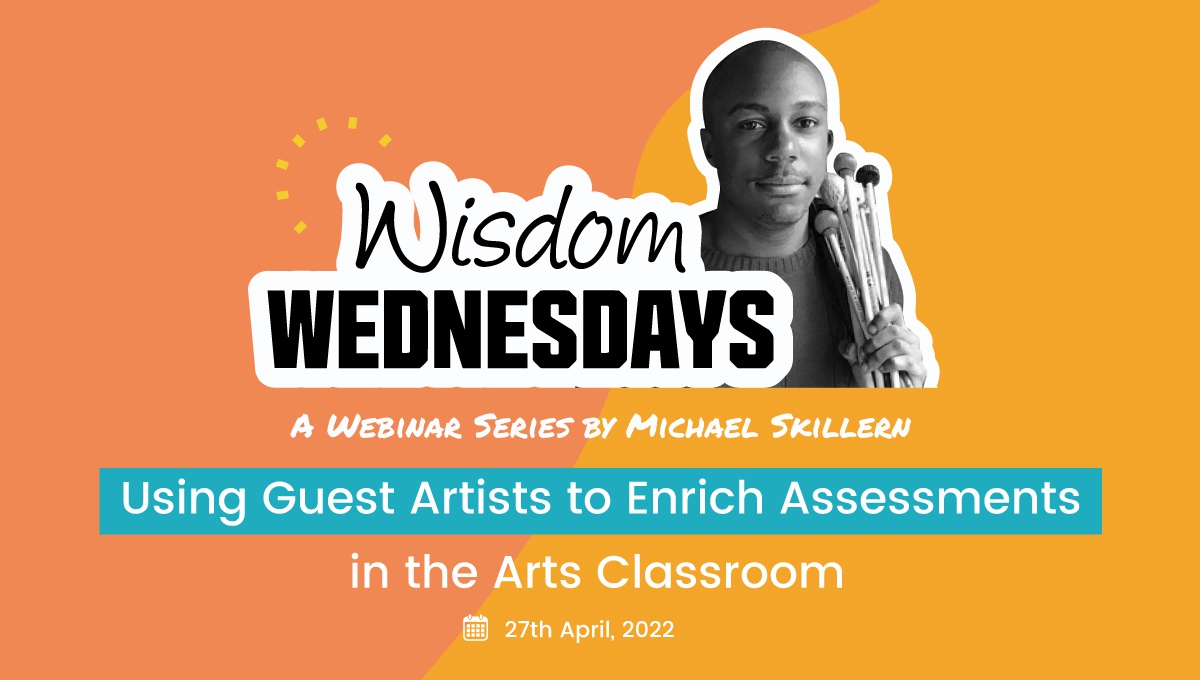Welcome back, Arts Educators!
This week’s Wisdom Wednesday is all about using Guest Artists to enrich the assessment process in the Arts classroom.
If you break assessments down into Knowledge and Understanding, Skill, Creative Thinking, and Responding, you will notice that there are many opportunities to include a CommonTime Teaching Artist into the experience.
Watch the full webinar below, or read on.
When working with Knowledge and Understanding, you can use a CommonTime Musician to provide a musical example to students. Your students could then use their knowledge to analyze or identify different elements in that performance. A musician playing a piece of music could lead to questions such as: ‘What dynamics were used?’ or ‘What rhythms are present?' The Guest Artist enriches assessments by providing real-world context. Guests Artists are also a great way to introduce knowledge, understanding, and vocabulary (especially in different languages).
When assessing Skill, you can use a professional CommonTime Dance Artist to introduce students to a set of moves or positions. Then, that same professional artist can return for a second lesson and host a traditional group dance class requiring students to perform and understand vocabulary. The second lesson serves as the assessment. You can also have your dance students use learned skills to create and teach their original choreography to the artist. By allowing the Dance students to receive feedback on their teaching from a professional dancer, they build real-world context for the learned skills. There are currently more than 54,000 dance studios in the USA alone. Prepare your students for real careers in the Arts!
When assessing Creative Thinking, bring in a CommonTime Visual Artist to help your students develop their own creative processes. When students learn about the creative experiences of a professional artist, they get the context they need to create their own artistic intentions for assessment. Have the artist give feedback on the students’ work so that your students can better visualize and make changes to their intentions. Changing and developing your original artistic plans in response to feedback is a creative process!
Lastly, consider bringing in a CommonTime Theatre Artist to enrich Responding assessments in the Drama classroom. Imagine your students are learning lines for short scenes. What if they transferred their learning from the stage to the audition table by reading in front of a professional actress? That small transfer of skill and knowledge is so vital when assessing your students’ ability to respond. Have this professional actress take your students on a crash course in cast directing. Students can work with the Artist to create their own criteria for success in acting. Then, they can use that rubric to give feedback and assess themselves and their peers!
Bringing in Guest Artists is the ultimate embodiment of the ‘R’ in the GRASP acronym (Goal, Role, Audience, Scenario, and Product). When assessing your students, Guest Artists give them a Role that connects them to the real world. We’re not just teaching 6th graders, we’re teaching young filmmakers, musicians, painters, actors, and more! Why not bring in someone who is currently living that role into the assessment process?
To find a Guest Artist that is right for your classroom, search the growing catalog of excellent Teaching Artists right here on CommonTime!
To learn more about GRASP tasks, check out the Wisdom Wednesday episode on GRASP Tasks in the Arts Classroom!



